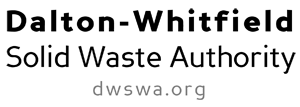Recycle & Reuse: Show your love with a newspaper rose
/To celebrate Valentine’s Day (which is tomorrow!), let’s make an upcycled single stem rose from today’s newspaper. Once you know how to make a basic flower shape you may want to go beyond a single stemmed rose and make a whole bouquet, make bigger flowers, or go stemless and use only roses to decorate a gift box or photo frame. Read on for three simple flower-making techniques that are ideal for newspaper but can also be used for other types of paper.
You’ll need newspaper from your recycling bin, a pen or pencil, a pair of scissors, a ruler and an adhesive such as glue, glue dots, hot glue gun, glue stick or tape. For the stem you’ll need a twig from the backyard, a pencil or a tightly rolled sheet of newspaper. Optional is a stapler and a set of markers or paints to color the rose once you’re finished making it. Even adding a little bit of color to the edges will make the flower pop. Also optional is a flower vase, depending on how you want to present the rose to your loved one.
Newspaper rose technique No. 1, The Spiral: Using your ruler and a pen or pencil, measure a 7 by 7 inch square on your sheet of newspaper. Fold the newspaper or add more sheets to cut out multiple squares at once. You can use any size square you want, however, the smaller the square, the smaller your rose will be. On one of the squares draw a spiral shape with a pen or pencil. Start at the center of the square and continue until you reach the edges. The spiral doesn’t have to be perfect, but do try to leave an even amount of space between each line. Cut out the spiral shape by starting at the outer edge and cutting along the line that you drew until you reach the center. Cut off the excess paper, like the corner edges of the square-shaped paper. If you have stacked several sheets and cut them together, be extra cautious. The spirals will get tangled up. Place the end of your stem at the outer edge of one of the spirals and tightly roll up the strip of paper, following the spiral shape until you get to the center. Lift up the stem and flower and let the paper unwind slightly. Pinch the bottom of the flower and adjust the width of the petals. When it’s the size you like, add glue to the bottom and any loose edges that may cause the flower to fall apart. To give it a more natural feel, gently push back the edges of the petals. Once you’re comfortable making a rose from one spiral shape, try making one with three or four stacked spiral cutouts for a thicker flower. Bonus tip, leaves: Make leaves for your flowers by cutting out a diamond shape from leftover pieces of newspaper. Curl back the edges of the diamond cutouts and squeeze one end together to give it a more natural shape. Glue to the stem or just underneath your new newspaper rose.
Newspaper rose technique No. 2, The Circles: Start with about eight newspaper squares that are 4 by 4 inches stacked on top of each other. Trim the edges to make a circle shape, or fold in half and cut out a u-shape. Once the circles are ready, stack them neatly and staple the center. You can also glue these together at the center but the flower may fall apart as you’re shaping it. Squeeze and crinkle the newspaper to add texture, folding it in half several times. Open up the flower petals and curl back the edges. If you want to add color, this is a good time to do so. Glue or tape the flower to your stem, covering the staple, and adding newspaper leaves as desired.
Newspaper rose technique No. 3, The Strip: Open and spread out a newspaper section that’s about two to four pages thick. Starting on the far left, vertically fold the newspaper towards the right for a four-inch fold. Continue folding over every four inches until you end up with a thick strip of newspaper. Now you need to tightly roll the strip of paper from the bottom of the newspaper to the top. You’ll end up with a four-inch wide roll. Insert the stem into the center of the roll and adjust the shape and look of the rose. Once you find a shape you like, add glue to the bottom and in between several of the layers of paper. This flower is usually thick and will require more glue to stay on the stem. Add leaves and color to finish up. These three techniques are simple and don’t require a lot of time to master. It may take you one or two tries before you make a rose that you’re pleased with. But no matter what technique you use to make your roses, I’m sure your loved ones will appreciate a hand-made gift that will last longer than a real rose.
Liz Swafford is the recycling and education program coordinator for the Dalton-Whitfield Solid Waste Authority. Contact her at (706) 278-5001 or at lswafford@dwswa.org.
This article was published in The Daily Citizen on Wednesday, February 13, 2013 and is also available here: http://daltondailycitizen.com/opinion/x2056613398/Liz-Swafford-Show-your-love-with-a-newspaper-rose

